I have just returned from Venice where I was delighted to visit the garden I helped to plant in May. Set in the Palladian monastery of San Giorgio Maggiore directly across the water from St Mark’s Square. The garden was designed and created by Todd Longstaff Gowan as part of an exhibit for the 2020/2021 Architectural Bienniale for the Caravane Foundation. The garden was designed to support a bamboo and woollen Majlis building created by celebrated Colombian architect Simón Vélez and Stefana Simiç. Partly a garden of paradise and also reflecting the role of both Venice and monastic gardens through history as recipients of exotic flora for medicinal, scent and culinary values.
The garden was originally laid out as 3 rather scruffy lawn quadrants and the forth housing an extremely rustic chicken coup and kitchen garden.
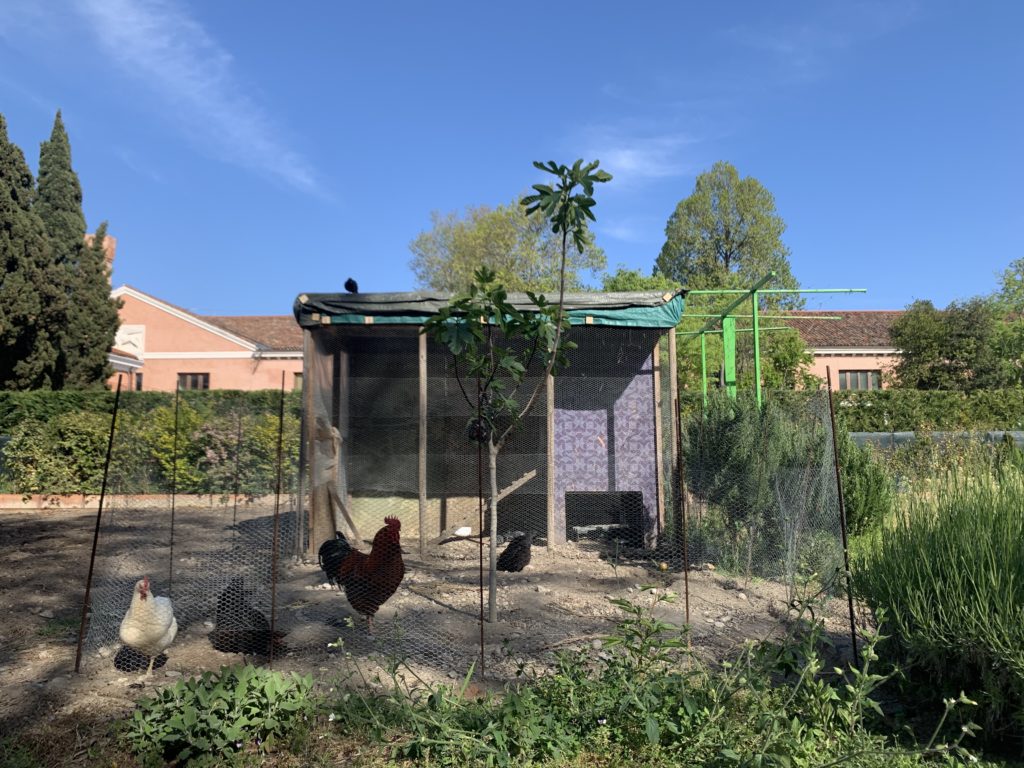
On the North side, adjacent to a cloister there is a row of plane trees and a large foxglove tree.

The new garden has been planted with some mature fruit trees seemingly randomly placed around the space. These were a mix of jujube, fig, pomegranate and persimmon. The lawns have been transformed into beds made up of raised rows where the planting looks very regimented to reflect the kitchen garden / monastic garden feel. The planting mixes rows of flowers (chosen for looks, scent and medicinal properties) with those of herbs and vegetables. Around the base of the fruit trees climbing zucchini have been planted. Where the old kitchen garden was, some herbs and onions have been preserved but this area is planted with predominantly vegetables, bordered with lilies.
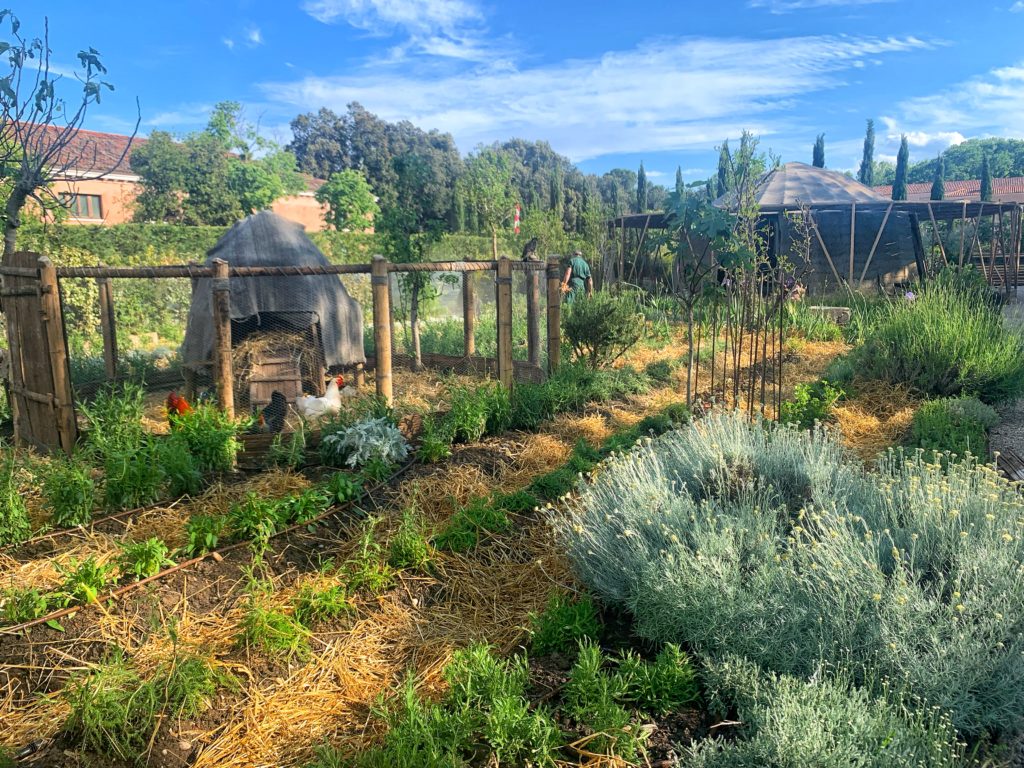
A very noticeable feature of the garden when I left in May was the very golden straw that filled all the furrows. This was to suppress the weeds and keep the moisture protected. May was exceptionally wet this year so it seemed like wishful thinking at the time! The golden lines reenforced the geometric, ordered nature of the planting.
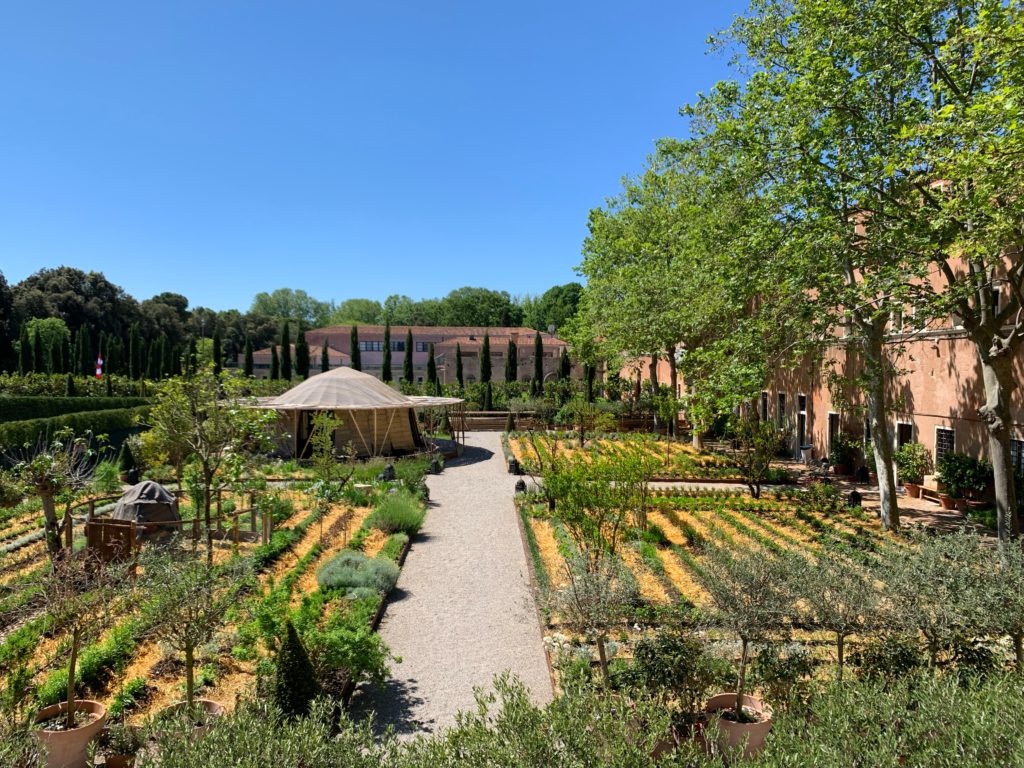
So when I returned last week it was a total shock to see how the garden has transformed.
I imagined that the hard geometry would remain, but I was so surprised when I returned last week to see a totally different garden. Todd had described this vision very clearly but seeing the contrast was surprising. The heat and humidity of the Veneto had done their magic. The plants had merged into each other and totally obscured the lines and straw to create a Persian carpet of patterns and colours all blending together. The legendary rising salt affecting Venetian gardens had not caused problems.
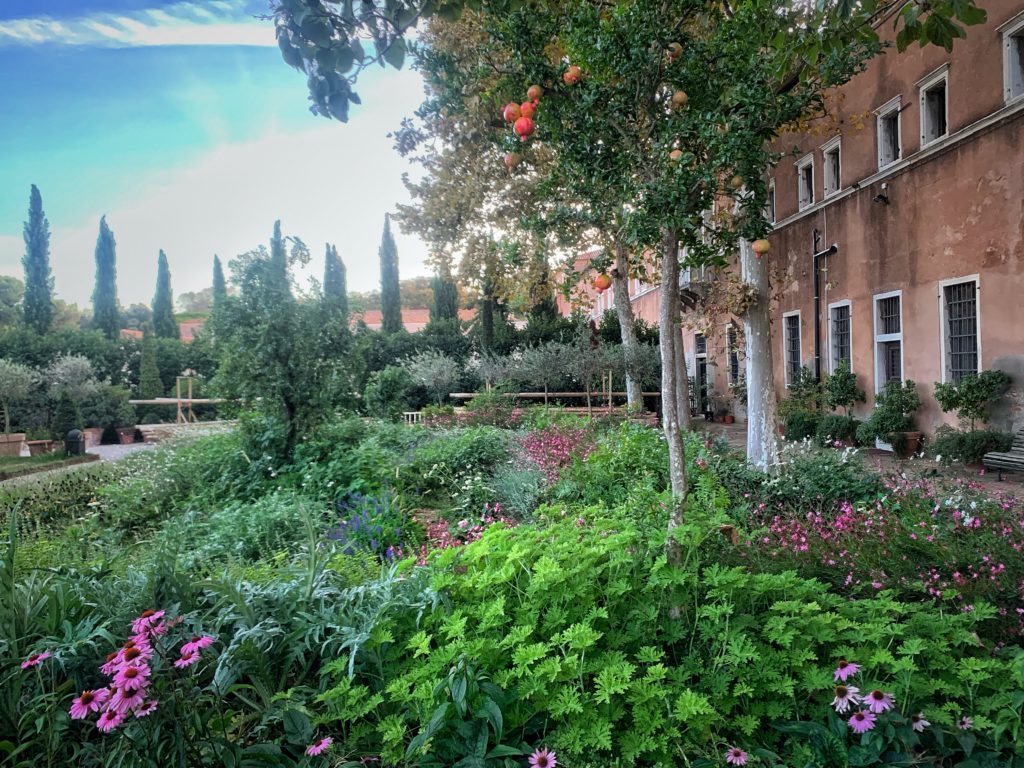
Where squash had been planted near the borders, they had spread out to merge the beds into the paths. Some of the trees had been taken over by very jungle like climbers.
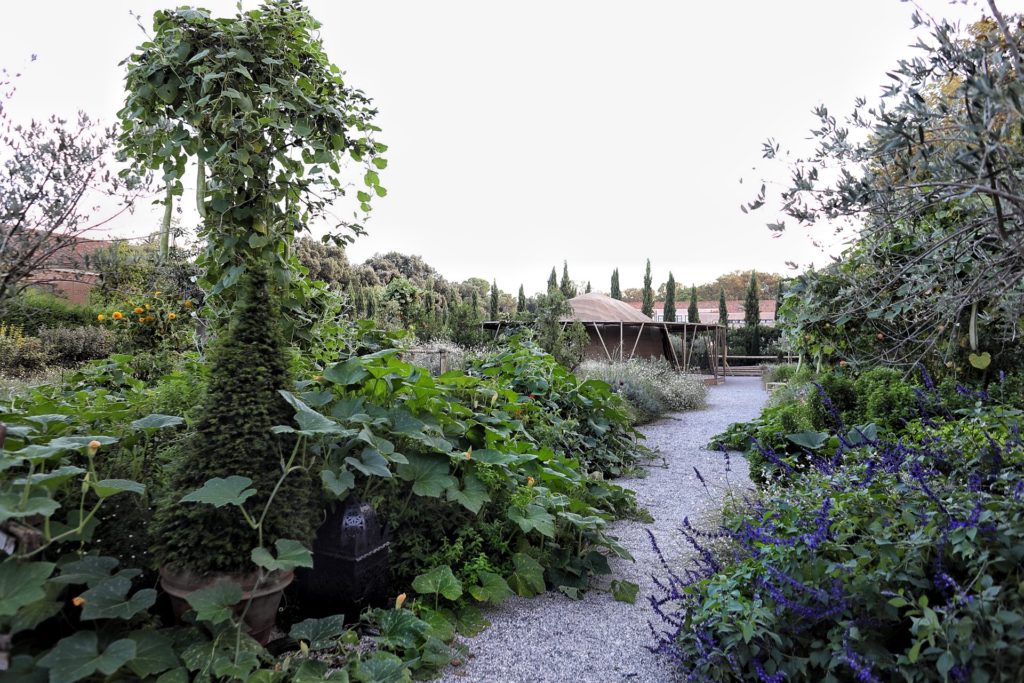
Below are a few panoramas of the garden as it now is. The excellent exhibition, curated by Thierry Morrel, which includes some fabulous 16th, 17th century crafts linking Venice with the Lavant will close at the end of October and the Majalis will move to Qatar, but let us hope this amazing garden will live on for a long time on its island.
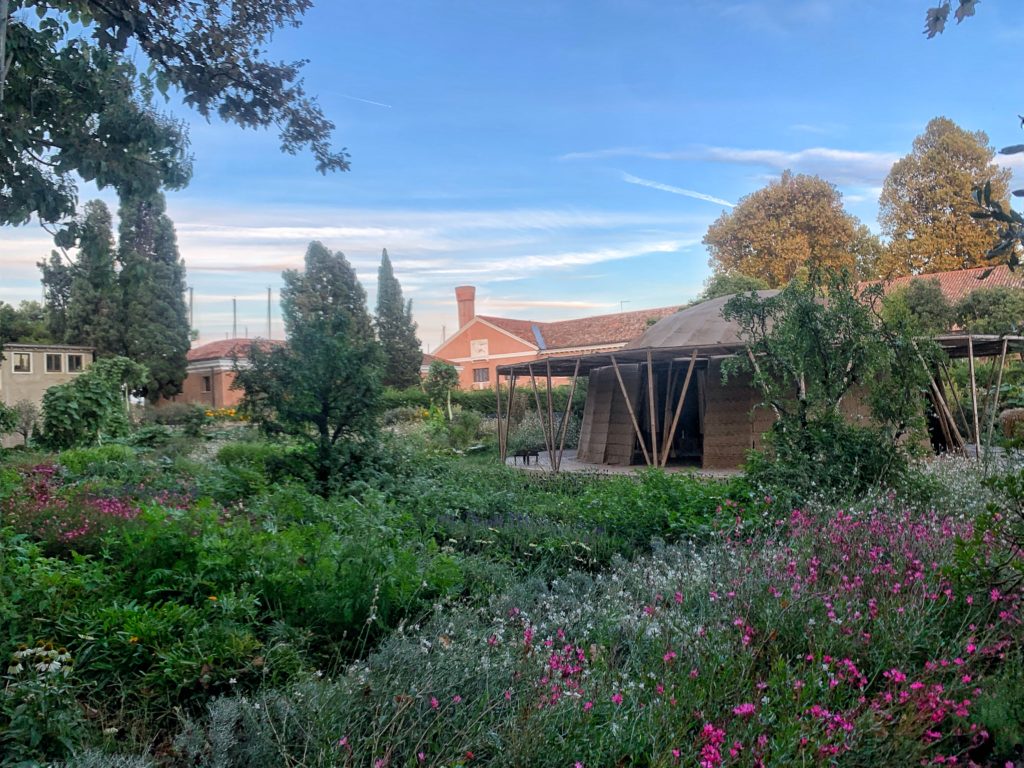
This tour has been recorded by the All Gardens app where you can click on individual plants and trees to find out more about them. We are launching the beta very soon so please don’t hesitate to contact us if you wish to have a go/look.
In the meantime you can look at a few 360 panoramas taken of the garden as it is this week…
The arrow at the bottom of the panorama brings up the controls. You can look at these full screen if you select the button with four outward pointing arrows. The double arrows on sides of screen take you to other views.